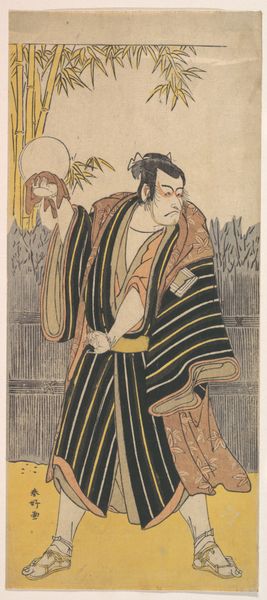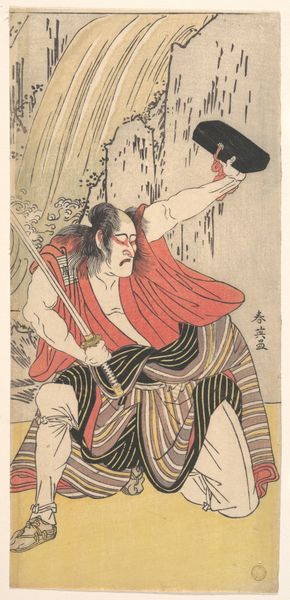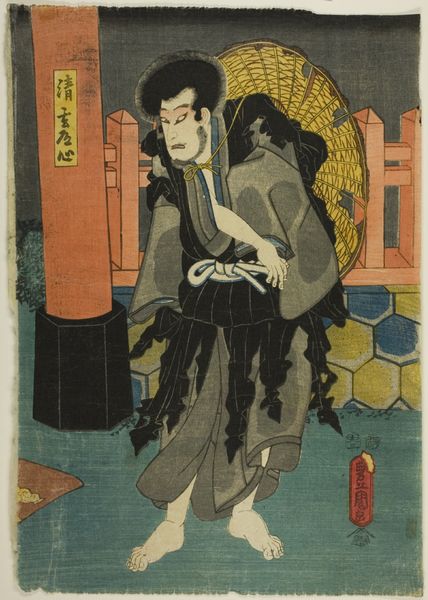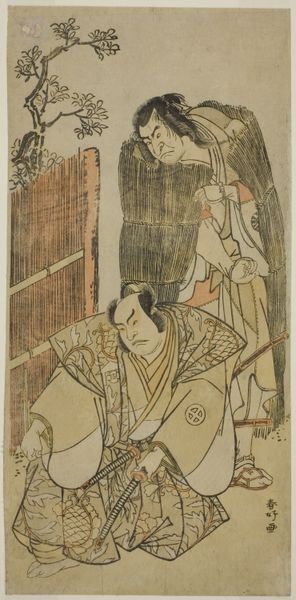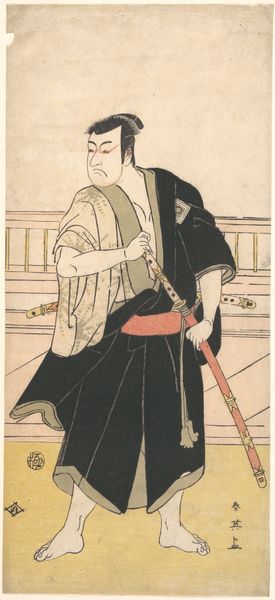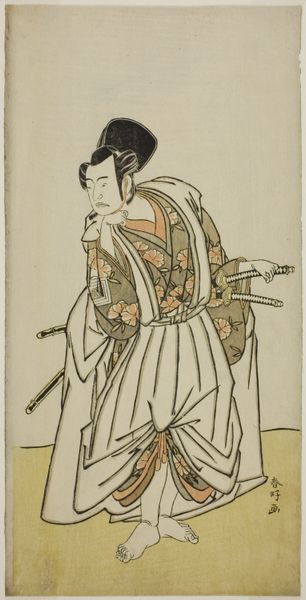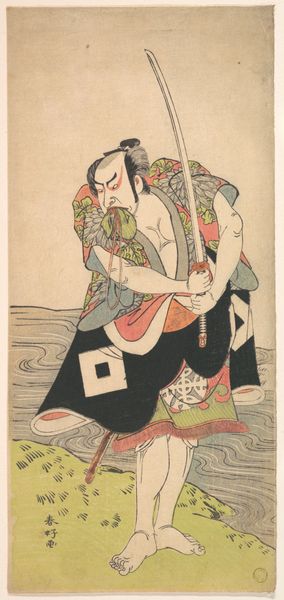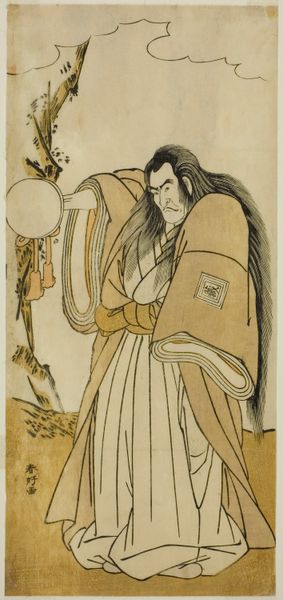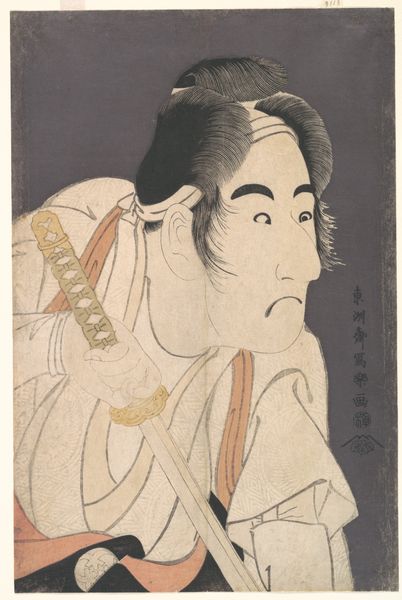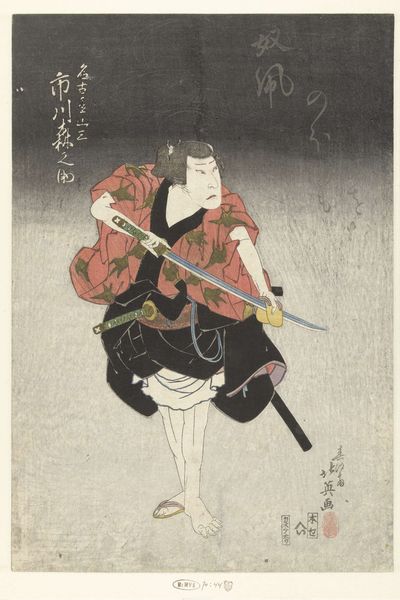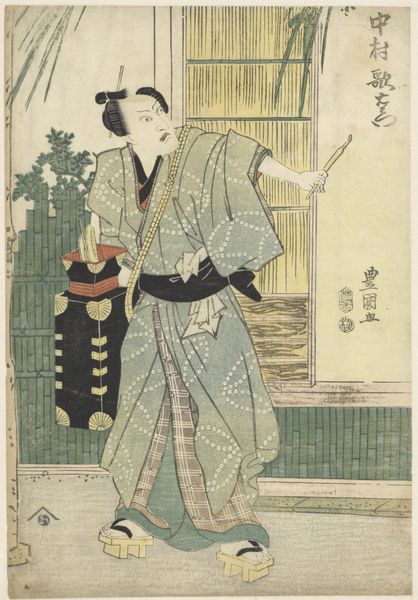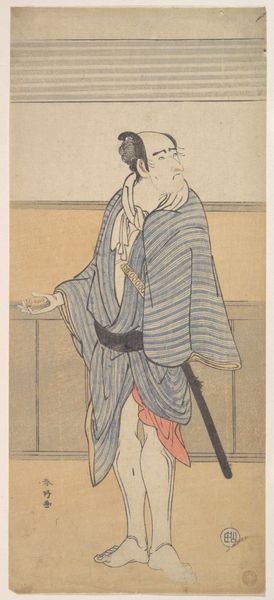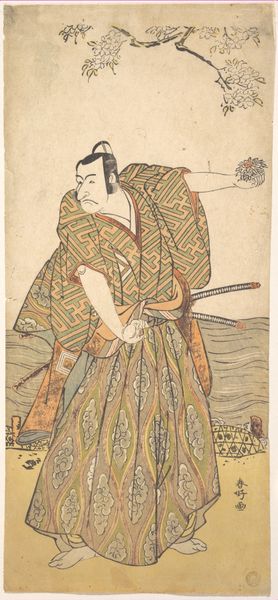
The Actor Ichikawa Danjuro V as Issun Tokubei in Act Eight of the Play Natsu Matsuri Naniwa Kagami (Mirror of Osaka in the Summer Festival), Performed at the Morita Theater from the Seventeenth Day of the Seventh Month, 1779 c. 1779
0:00
0:00
print, textile, woodblock-print
#
portrait
#
ink painting
# print
#
asian-art
#
textile
#
ukiyo-e
#
linocut print
#
woodblock-print
#
genre-painting
Dimensions: 31.4 × 14.5 cm (12 3/8 × 5 11/16 in.)
Copyright: Public Domain
Curator: Katsukawa Shunko's woodblock print, "The Actor Ichikawa Danjuro V as Issun Tokubei," made around 1779, really jumps out, doesn't it? Part of the "ukiyo-e" tradition... It's currently held here at the Art Institute of Chicago. Editor: Yes, what strikes me first is the raw intensity in the actor’s expression, yet it's simultaneously undermined by the absurdity of the almost cartoonish pose. There’s tension here. Is he meant to be heroic or are we meant to question the narratives being performed? Curator: In the context of ukiyo-e, actor portraits were immensely popular. They served almost as promotional material and celebrated particular performers. Danjuro V was a star. These prints became markers of status. Shunko captured more than just a likeness. This is also documentation of theatrical culture of the era. Editor: Exactly! And considering the political context – the Edo period was tightly controlled by the shogunate. The Kabuki theater, despite censorship, offered spaces where societal critiques could be veiled through exaggerated narratives and complex symbolism, giving performers a voice, but within strict boundaries. I wonder to what extent Issun Tokubei's story challenged authority. Curator: It is subtle, I would say. More immediately, theater at this point had transformed into a spectacle economy. To witness a particular actor was akin to gaining status and understanding, not simply consuming propaganda, but to participate in an element of social identity. Editor: Still, the pose is dynamic. One hand clutching rope, another wielding some short weapon with a sense of determined ferocity, against this black background, there is certainly social defiance embedded in the work through this determined posture. The art becomes more than celebrity portraiture; it’s an articulation of how power, resistance, and performativity intersect. Curator: Perhaps a potent, early articulation that carries immense reverberations to this day. Editor: I concur, an early statement regarding the complex interplay of those aspects. It also subtly calls upon us to continuously dissect such intersections to fight for meaningful representation and equity across performance platforms today.
Comments
No comments
Be the first to comment and join the conversation on the ultimate creative platform.
